Erika Lacava: The “Studio Visit” format aims to investigate the methodological aspect of the artist’s work and its relationship with the studio. What type of study do you have and in which way do you use it? Is it just a workplace or even a meeting place?
Santissimi: Our place more than a studio is an operating room, a workshop, a tailor’s shop. In short, an executive environment, and that’s why we called it a laboratory right away. Being a purely working area, it is not an open place in which to dialogue with other people: it is an aseptic and functional space for the realization of artworks. We opened the lab to the public but only in times when we weren’t working. Occasionally friends, collectors and gallery owners came to visit us but in these cases the space is more a free zone, because it is set up with works and angles of reflection that we try to integrate into the work environment, rather than our habitat. It turns into a place of representation and curatorship.
Are there sofas, relaxation and design areas in your studio or only the tools useful for the material realization of the work?
Being a laboratory in all respects, there are no sofas inside. There are some purely functional chairs and large tables that are moved here and there for practical needs. Along the walls shelves with work tools such as silicone, colors, resin, chalks, oil colors, but also screws, drill, welder, miter saw etc. We try to devote little time to the project and the thought of the works. Everything starts from a vision, from an image that we try to follow, but punctually during the realization process everything that the words had expressed, all the ideas that we had decided to reflect are invariably subtracted from practical needs. The work has always had the upper hand on us, it is always a step forward, there is nothing to do. When we start to get involved, the work of art becomes always more than our intentions, allowing us to know new worlds, including our little one, and that urgency that we believed to be ours is actually part of a larger system. This is not literature, it is what really happens to us when we create a work: we always have the feeling of losing sight of it, of not having control over it, of having something else in our hands that we simply have to indulge. For this reason we have learned not to define in advance nor to give the technique the decisive superiority. Let’s say we manage what happens in half.
Do you have a separate warehouse or do the works coexist with the process of creating new ones?
We do not like to keep our works in the laboratory: once finished we seek them shelter from our judgments, which would be cumbersome and overbearing both in physical and metaphysical space. We have a warehouse, never large enough, which contains artworks in their packaging, so that they are always ready to go.
You were born as a duo in 2009 from different study paths. How has your relationship evolved over time as a single production subject? Do you always go to the studio together or even individually? Are you more methodical or irregular?
Sara Renzetti: Our frequency in the laboratory is constant and daily; we go separately but we often meet together. We have a very different approach, me and Antonello. He is more regular and methodical, he is a true alchemist that manages to transform matter into ever new solutions. On the other hand, I am more instinctive and less disciplined, abstract in the hands of the sensible. Over time, this being of ours has been increasingly clear and radical: the work is nothing but the legitimate daughter of this otherness. It is as if it, confused between the parties, takes the situation in hand by completing the task and leaving us with the feeling that it generates by itself.
What happened to your work during the lockdown period?
During the lockdown we saw each other exactly as before: we live in the same country but in two separate houses and the laboratory was the meeting place for us. We talked a lot at that time and we had the feeling of living in a place more similar to us because there was no one outside. The supremacy of all that was not human made us feel at home. The trees, the leaves, the polyphony of the birds, the silence of the sky, the streets as impassable lines, the distances become again distant. Man had shrunk to being a thing among things, and even dying seemed more normal than ever. We had the feeling of having the moral law more and more within us and the starry sky seemed to be getting closer. We were suspended. Kept from above to look down, to return to being all children and no longer fathers, species among the species and, to repeat myself, thing among things”.
The Santissimi are an artistic duo of Sardinian origins made up of Sara Renzetti (1978) and Antonello Serra (1977), trained in Florence respectively in Painting and Architecture. The Santissimi define their works as possible figures of excess, exercises of mind, visual poems, selfies passable on the transience of existence. Now is currently on show (until August 2, 2020) the exhibition “Ceci n’est pas un corps” at the Musèe de la Boverie in Liège (Belgium), with works by Cattelan, Ron Mueck, Berlinde De Bruyckere, Duane Hanson. Among their latest exhibitions: SANTISSIMI, curated by Simona Campus, Exmà, Cagliari, 2018; Rebirth, White Noise Gallery, Rome, 2018; Limen, bipersonal curated by Alessandro Demma, Centometriquadri Gallery, Santa Maria Capua Vetere, 2018; Asylum curated by Roberta Vanali and Efisio Carbone, Exmà, Cagliari 2017; Art Wynwood, Miami, Robert Fontaine Gallery, 2017; Context Art Fire, Miami 2017, Space Appeal, curated by Francesca Canfora and Cristina Marinelli, Turin, 2016.
Info:
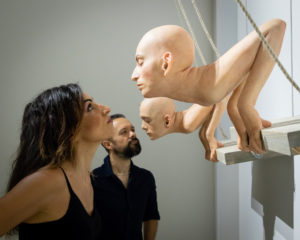 Santissimi, Migrants (Self Portrait), silicone, resin, wood, iron, 2015, courtesy Whitenoise Gallery ph. Francesco Pruneddu
Santissimi, Migrants (Self Portrait), silicone, resin, wood, iron, 2015, courtesy Whitenoise Gallery ph. Francesco Pruneddu
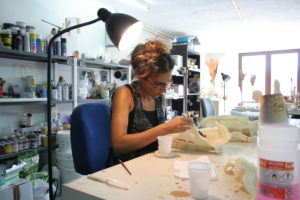 Santissimi working in their laboratory
Santissimi working in their laboratory
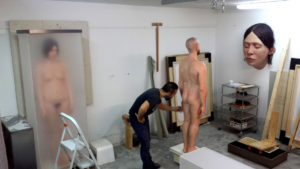 Santissimi working in their laboratory
Santissimi working in their laboratory
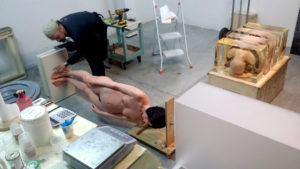 Santissimi working in their laboratory
Santissimi working in their laboratory
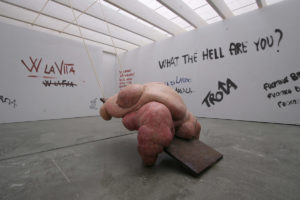 Santissimi, W la vita, inflatable sculpture in silicone, iron, ropes, words on the wall, 2019
Santissimi, W la vita, inflatable sculpture in silicone, iron, ropes, words on the wall, 2019
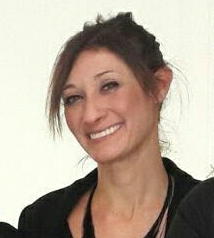
Erika Lacava, degree in Aesthetic Philosophy at the State University in Milan with a specialization in Visual cultures and curatorial practices at the Brera Academy. From 2014 to 2017 with the experience of Zoia – Contemporary Art Gallery she comes into direct contact with the dynamics of scouting and the art market. Independent curator, collaborator for printed and online art magazines, in 2019 she founded the communication and services start-up for art M2F Communication.






NO COMMENT